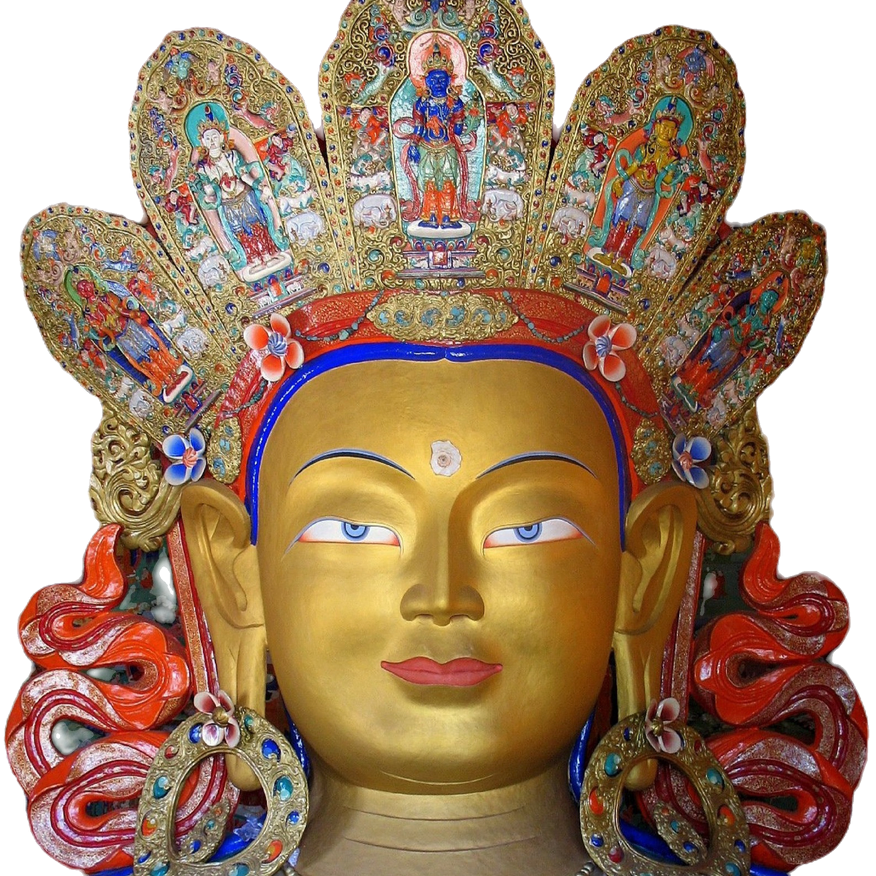Buddha Maitreya
There are multitudes of buddhas, especially in Mahayana and Vajrayana scriptures and art. They represent aspects of enlightenment, and they also represent our own deepest natures.
Some of the better known iconic or transcendent buddhas include Amitabha, the Buddha of Boundless Light; Bhaiṣajyaguru, the Medicine Buddha who represents the power of healing; and Vairocana, the universal or primordial Buddha who represents absolute reality. The way the buddhas are posed also convey particular meanings.
Maitreya is recognized by both Mahayana and Theravada Buddhism as one who will be a Buddha in a future time. He is thought to be the fifth and last Buddha of the current world age (kalpa). Unlike his antecedent, however, Maitreya is understood in a more millennial light, as he is predicted to be a “world-ruler,” uniting those over whom he has dominion.
According to some Buddhist traditions, the period of the Buddhist Law is divided into three stages: a first period of 500 years, of the turning the Wheel of the Law; a second period of 1,000 years, of the deterioration of the Law, and a third period of 3,000 years (called Mappo in Japan) during which no one practises the Law.
After this, Buddhism having disappeared, a new Buddha will appear who will again turn the Wheel of the Law. This future Buddha is still in the Tusita heaven, in the state of a Bodhisattva. Gautama Buddha himself will enthrone him as his successor.
Maitreya is first mentioned in the Cakkavatti Sutta of the Pali Tipitika. The sutta describes a future time in which the dharma is entirely lost, at which time Maitreya will appear to teach it as it had been taught before. Until that time, he will dwell as a bodhisattva in the Deva Realm.
The name Maitreya or Metteyya is derived from the word maitrī (Sanskrit) or mettā (Pāli) meaning “loving-kindness,” which is in turn derived from the noun mitra (Pāli: mitta) (“friend”). He is now living his last existence as a Bodhisattva. In anticipation of his imminent arrival, he is sometimes considered as a Buddha and given the title of Tathagata.
In Korea and Japan, where his cult enjoyed great favour from the sixth century, he is often confused (as in China) with Amitabha and Sakyamuni. In sculpture, he was sometimes confused with Nyoirin Kannon in Japan, a form of Avalokitesvara. In Tibet, when he is represented seated, his legs hang (in the European manner) and he is clothed as a Buddha.
We have to understand, Buddha Maitreya said, that the relative Dharma, everything in the books, is like a bridge. A bridge is helpful for crossing a river, but once you’ve crossed it, it’s “Goodbye bridge!” isn’t it? You have to touch the heart. Once you’ve experienced the fundamental nature of your own self — and your own consciousness — it’s goodbye to all the philosophical concepts.



